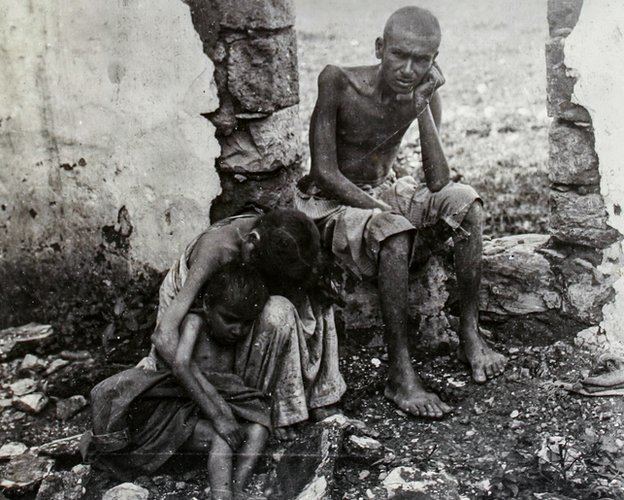Total deaths Est. 200,000 | Period 1915–1918 | |
 | ||
Impact on demographics population of 400,000 declined by 50% | ||
The Great Famine of Mount Lebanon (1915–1918) was a period of mass starvation during World War I. The famine was caused by a convergence of political and environmental factors that lead to the death of half of the population of Mount Lebanon Mutasarrifate, a semi-autonomous subdivision of the Ottoman Empire and the precursor of modern day Lebanon.
Contents
Background
The Mutasarrifate of Mount Lebanon was created in 1861 as a semi-autonomous subdivision of the Ottoman Empire following the 1860 Lebanon conflict that affronted the Maronite Christians and the Druze of the mountain. Mount Lebanon's economy relied heavily on sericulture; raw silk was processed in looms and finished goods were destined for the European market.
Causes
Ottoman alignment with the Central Powers during World War I caused the Entente Powers to block international trade routes in an effort to stop the supplies to the Ottomans. The blockade damaged Mount Lebanon's silk trade, a backbone of the economy. Growing crops was already a challenge in the mountainous range and the inhabitants heavily relied on food imports from the adjacent Bekaa Valley and Syria. To counter the Allied blockade, the Ottomans adopted a severe policy of acquisition by which all foodstuffs were prioritized for the Ottoman soldiers engaged in the war. The Allies' blockade was made worse by another introduced by Jamal Pasha, the commander of the Fourth Army of the Ottoman Empire in Syria region, where crops were barred from entering from the neighboring Syrian hinterland to Mount Lebanon, and by the arrival of a swarm of locusts to the region in 1915 that, for three continuous months, devoured the remaining crops. The crisis further exacerbated a black market run by well-connected usurers.
First grain shortages
The Ottoman Empire joined the Central Powers in World War I on October 28, 1914. The Ottoman government had appropriated all of the empire's railway services for military use, which disrupted the procurement of crops to parts of the empire. One of the first cities to be hit by the grain shortage was Beirut.
On November 13, 1914, only 2 weeks after the Ottoman Empire joined World War I, a group citizens stormed the Beirut municipality to warn the municipal council of the severe shortage of wheat and flour in the city. The train freight cars that regularly transported grains from Aleppo had not arrived and the bakery shelves were empty. Angry mobs looted the bakeries of whatever little reserves of flour and grain they had left. The municipal council dispatched a message to then Beirut Vali Bekir Sami Kunduh who requested grain provisions from the governor of Aleppo Vilayet and urged the Ottoman authorities to prioritize grain shipping to Beirut. Acquiring train freight cars to transport anything to the Beirut Vilayet was impossible without paying large bribes to military commanders and to the railroad authorities. Grain prices began to soar, which prompted the president of Beirut's municipal body, Ahmad Mukhtar Beyhum, to address the grain supply bottlenecks himself.
On November 14, 1914, Beyhum took off to Aleppo, where he negotiated with the authorities and secured grain freight cars from the Ottoman Fourth Army. The wheat was paid for from the municipal treasury. Grain freights arrived to Beirut on November 19, 1914 to the relief of the masses; however, the crisis was to worsen as reports of the Ottoman officials and correspondence of the Syrian Protestant College staff indicated that food shortage became a daily occurrence as of November 1914 and got more severe as the war drew out.
Impact
Around 200,000 people starved to death at a time when the population of Mount Lebanon was estimated at 400,000. The Mount Lebanon famine caused the highest fatality rate by population of World War I. Bodies were piled in the streets and people were reported to be eating street animals while some even resorted to cannibalism.
Soup kitchens were set up but had little effect in relieving the starving population. The Lebanese community in Egypt funded the shipping of food supplies to the Lebanese mainland through the Island of Arwad facing the Syrian littoral to the north of Tripoli. This assistance was delivered to the Maronite patriarchate who distributed it to the populace through its convents.
Memorials
There are no memorials commemorating the civilian victims of the World War I famine, neither in Lebanon nor in Syria.
